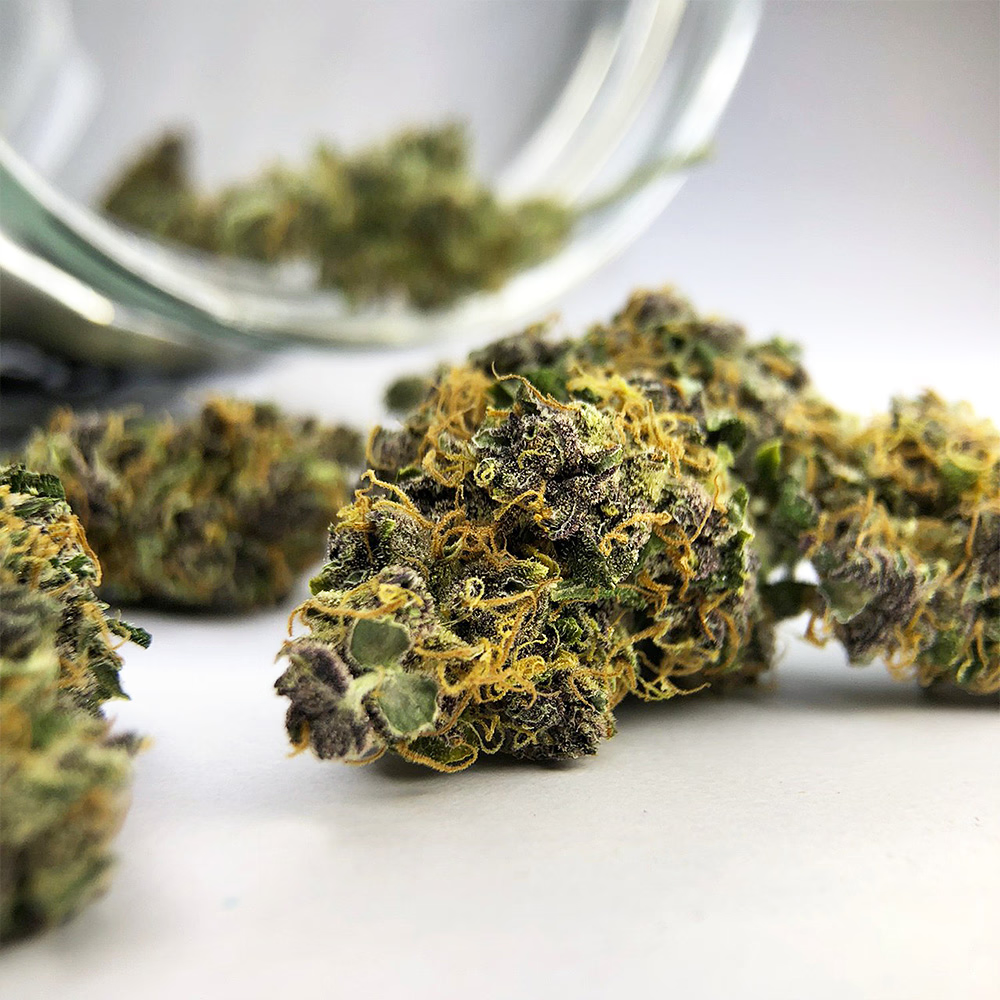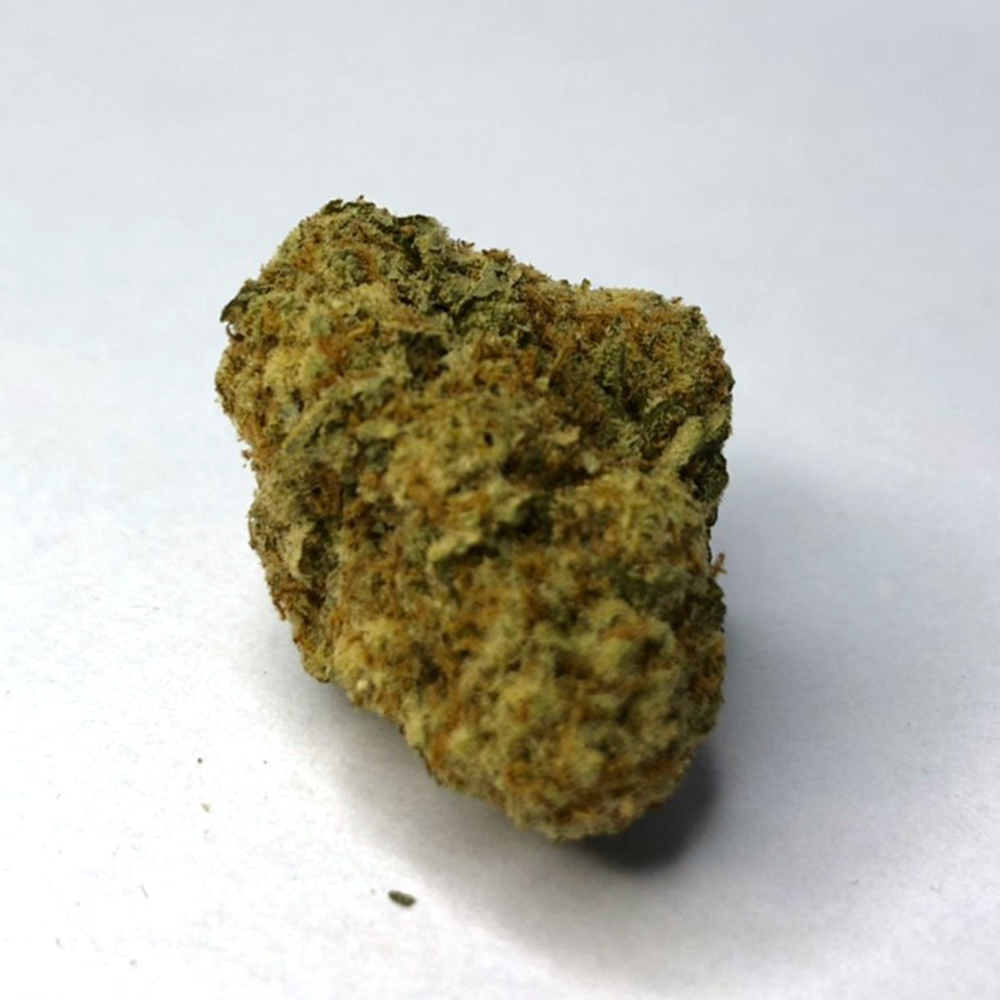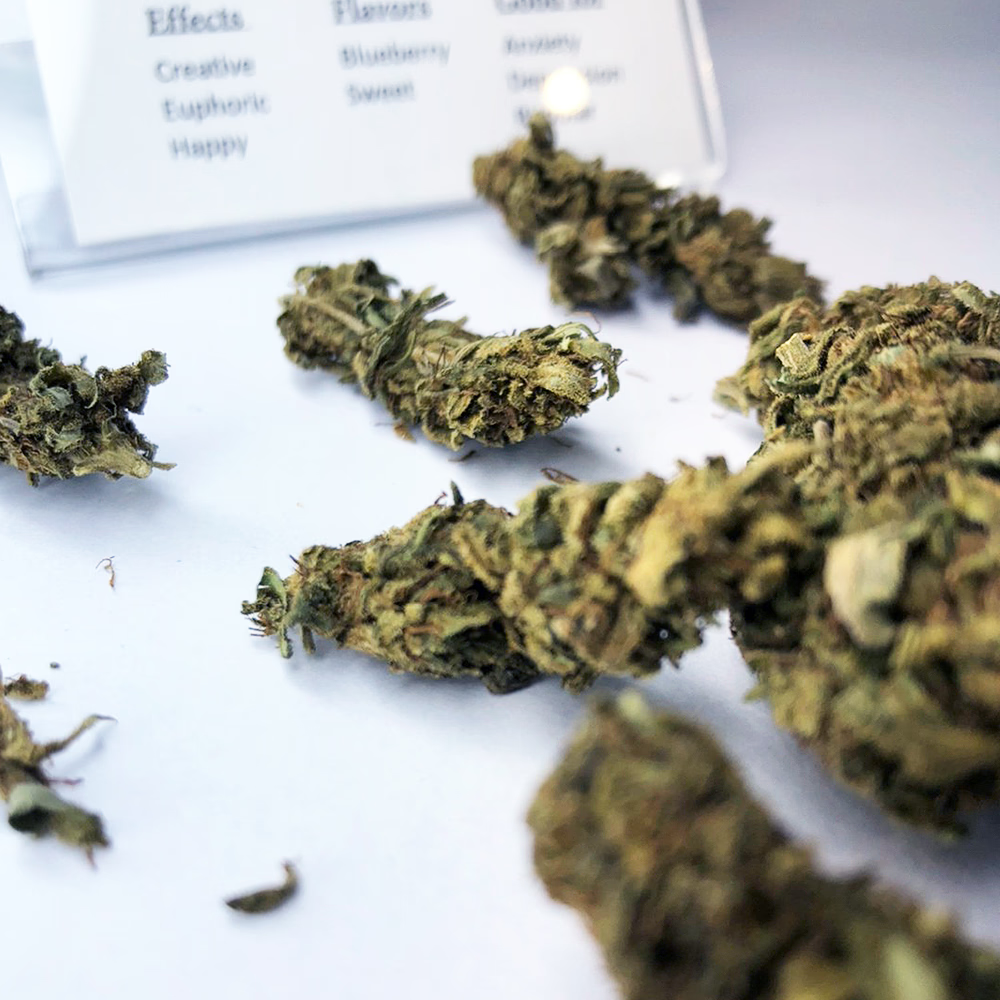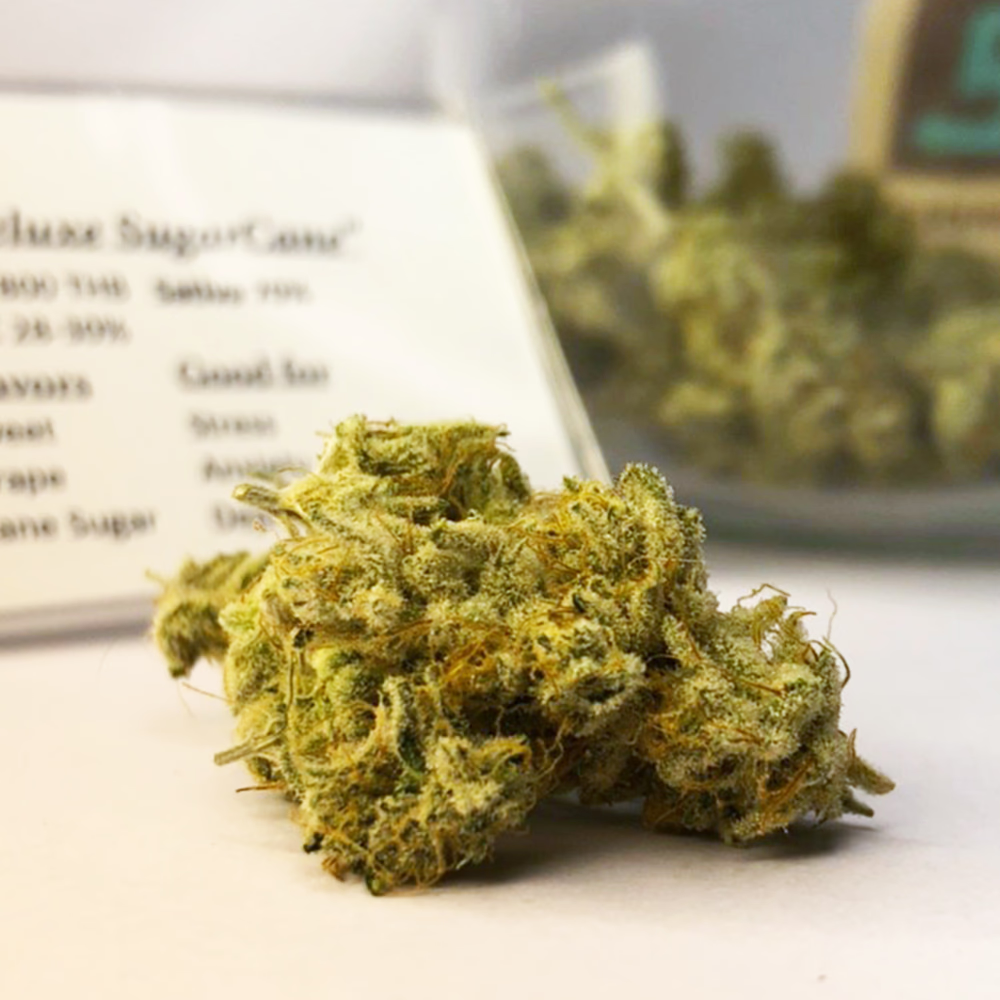Grow Cannabis Hydroponic aeroponic System.
Hydroponic aeroponic System.
Three of the most widely used techniques for growing plants without earth are hydroponics, aeroponics, and aquaponics. All three methods provide a fantastic way to produce healthy plants with the least amount of work, though each has specific benefits and drawbacks.
A hydroponic aeroponic system, which incorporates components from both hydroponics and aeroponics, is one of the more sophisticated systems. In this piece, we'll go over what a hydroponic aeroponic system is, how it functions, and some of its advantages for growing plants.
An aeroponic hydroponic setup is what, exactly? As the name implies, it combines hydroponics and aeroponics, two distinct growing methods. While aeroponics involves suspending plant stems in the air and misting them with water or nutrients, hydroponics involves growing plants in water or nutrient-rich solutions rather than soil.
A hydroponic aeroponic system blends these two methods by putting plant roots in air-filled chambers above a space where they can be misted with water or nutrients. As a result, your plants get oxygenated hydration through both their root and foliage systems simultaneously.
One of the main advantages of using a hydroponic aeroponic system is that it takes up much less room than other gardening techniques, including conventional gardening and even other indoor gardening techniques like container gardens or aquariums.
You can fit more plants per square foot using vertical gardening techniques because your plant's roots don't require any physical room because they are suspended in air rather than soil. Additionally, since there isn't any dirt being tracked throughout your home because your plant's roots are suspended in air rather than soil, you will have less waste to clean up!
Another fantastic advantage of using a hydroponic aeroponic system is that it enables faster development rates than other gardening techniques because the oxygenated moisture is instantly absorbed into the root system, giving your plants instantaneous nutrition.
Additionally, compared to traditional gardening techniques, there is significantly less risk involved when trying out new varieties or experimenting with various fertilizers/nutrients on your crops because everything is so carefully controlled (temperature, humidity, etc.)
In conclusion, consider using a hydroponic aeroponic system if you're looking for a simple method to start indoor gardening. They are ideal for condo living or anyone who wants to save on floor space while reaping indoor food production's benefits.
They offer excellent control over conditions like temperature and humidity and take up very little room. Additionally, when implemented correctly, these systems can rapidly yield high quantities of produce, allowing you to consume fresh fruits and vegetables more quickly than ever.
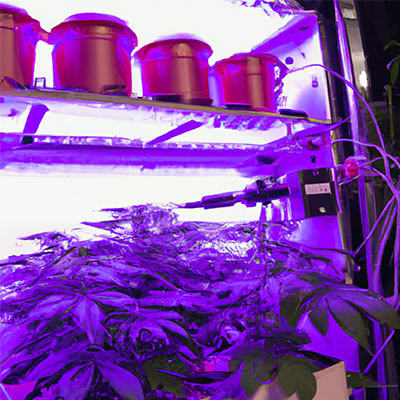
How Does an Aeroponic System Work
An advanced hydroponic technique known as aeroponics grows vegetation without soil or water. A plant production technique called aeroponics involves suspending the roots in the air and misting them with nutrient-rich water.
The mist keeps the roots cool and moist while supplying the water, nutrients, and oxygen required for plant development. Due to its capacity to produce large yields quickly and with little work, this type of growing System has been utilized for centuries by numerous civilizations worldwide.
A network of pipes or tubes is used in aeroponic devices to suspend the roots of a plant in the air. These tubes or pipelines are attached to a pump, which periodically, throughout the day, sprays a highly oxygenated nutrient solution directly onto the root zone.
The nutrient solution contains vital minerals, vitamins, and nutrients that support healthy root development and give your plants extra nutrition. Aeroponic systems are typically maintained inside a climate-controlled setting, such as a greenhouse or indoor grow room, to guarantee ideal growth conditions.
The ability of aeroponics to deliver oxygen directly to the root zone while maintaining sufficient moisture levels without drowning the roots in standing water, as traditional hydroponics can, is its primary advantage over hydroponics.
Aeroponic systems foster an ideal growing environment for cannabis plants that promote quick growth rates and high yields with little effort on your part - something not easily achieved through other methods! They do this by dispensing highly oxygenated nutrient solutions directly onto the root zone along with ample amounts of moisture.
Additionally, since an aeroponic system doesn't require soil, you won't need to consider adding fertilizer or dealing with pests. These are two common problems growers face using conventional techniques like soil or hydroponics. This makes it simpler than ever to start growing marijuana indoors without worrying about additional expenses related to setting up a proper grow room.
As a result, aeroponic systems offer cannabis growers an effective way to quickly grow their plants and create high yields with little work, making this type of growing System both affordable and straightforward. Your aeroponic System should last years of joyful harvests with the proper upkeep and care.
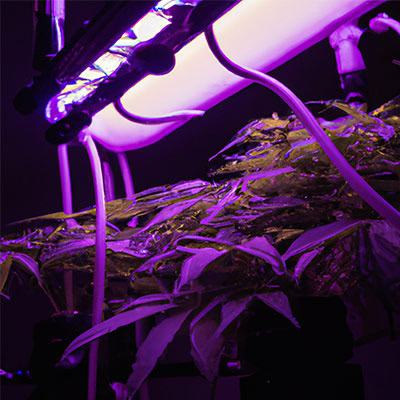
Nutrients needed to grow cannabis in hydroponics and aeroponics.
Cannabis can be grown hydroponically and aeroponically for optimum yields of high-quality buds. However, knowing the nutrients for healthy cannabis plants is crucial for effective cultivation. The specific nutrients required to grow cannabis in hydroponic and aeroponic systems will be discussed in this article.
Calcium: All plants require calcium as a necessary nutrient, but plants produced in hydroponic and aeroponic systems require more calcium. The plant can receive more water and nutrients from the medium or solution because this nutrient aids in developing robust cell walls.
Your plants will experience stunted development and general health problems without enough calcium, which can result in poor yields.
Magnesium: A crucial element in the transmission of energy within plant cells, magnesium is a component of chlorophyll molecules, the green pigment responsible for photosynthesis.
Add magnesium supplements to your diet if you notice symptoms of a magnesium deficit, such as yellowish leaves or stunted development. Magnesium deficiencies can also cause older leaves to turn yellow.
Nitrogen: Nitrogen is one of the three essential macronutrients (along with phosphorus and potassium) that all plants need to survive. It promotes the development of leaves and gives energy to developing flowers later in the growth cycle.
Ensuring enough nitrogen is accessible will prevent slower growth rates and weaker stems from breaking readily under heavy buds during harvest.
Phosphorus: Another essential macronutrient, phosphorus promotes strong stem growth that can help prevent stem breakage due to heavy bud production later in the growing cycle. It also aids in healthy root development and flowering.
Too much phosphorus can cause stunted vegetative development before flowering begins later on, so be careful not to oversupply your System with it.
Potassium: Potassium helps plants grow more vigorously generally by facilitating the efficient uptake of other minerals into cells and increasing sugar production within them, which results in higher-quality buds when it's time to harvest.
Insufficient potassium causes thin stems that might not be able to sustain more enormous colas, so depending on the strain you are growing, you should add potassium supplements.
Iron: All plants, including cannabis plants, need proper iron. Without enough iron in nutrient solutions or media, plants cannot effectively use other minerals, such as nitrogen, resulting in stunted, unattractive vegetation before blooming. If necessary, make sure there is plenty accessible through supplements.
Boron: By strengthening cell walls and ensuring proper movement between flowers/buds and surrounding tissue during flower formation, boron helps plants withstand pests like spider mites and produces higher-quality harvests.
Boron supplements should only be used when necessary because excessive amounts can eventually cause phytotoxicity problems.
Copper and molybdenum (trace elements): Both are typically found naturally occurring within nutrient solutions or mediums but should be supplemented as needed throughout your grow cycles depending on strain type, growth habits, etc.
These two trace elements aid overall health by promoting vigorous vegetative & flowering cycles, respectively.
When growing cannabis in hydroponic or aeroponic systems, several essential nutrients must be provided, including calcium, magnesium, nitrogen, phosphorus, potassium, iron, boron, copper, and molybdenum (trace elements).
You'll have more success producing high-quality buds come harvest time if you ensure these nutrients are accessible throughout all growth phases. Good luck and happy growing up to everyone.
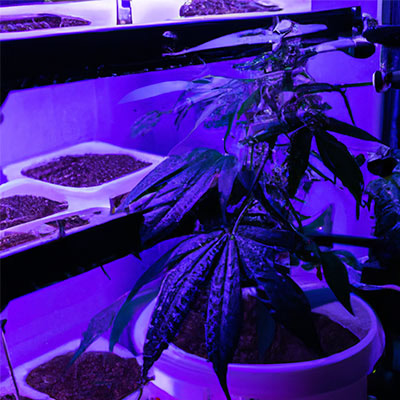
Benefits of Using an Aeroponic System.
Faster Growth: Cannabis plants grow more quickly and develop to their maximum potential in an aeroponic system, which offers an ideal growing environment for cannabis plants. By spraying an oxygen-rich mist onto the roots, water is effectively taken and transformed into energy that supports plant growth.
More Productive Yields: Because aeroponics systems offer a more effective method of delivering nutrients directly to the root zone, they enable you to optimize the yield of your harvest. Since all the required components are directly supplied via the misting System, the absence of soil also removes problems with overwatering or nutrient deficiencies.
Less Maintenance: Aeroponic systems are self-contained and have an automated irrigation system, requiring considerably less maintenance than conventional planting techniques. Growers can easily regulate various aspects of their crop's environment, such as humidity levels and air circulation, with little effort, lessening stress on you and your plants.
Lessened Risk of Pest Infestation: Since an aeroponic system's closed-loop design prevents most pests from surviving there, producers don't have to worry as much about keeping nasties at bay as they would using soil-based techniques. This not only saves time but also protects your merchandise from any unauthorized users.
Space Saver: Aeroponic systems are an excellent option for people with limited space who still want to grow marijuana indoors because they take up much less space than other growing methods like hydroponics or soil cultivation. This makes them perfect for urban gardeners or anyone looking for a discrete setup.
There are no exposed soils in an aeroponic system, so you don't have to worry about messy spills or coping with debris around your plants. Furthermore, since all of the nutrients for your plants are already mixed and in liquid form, you don't need to mix any fertilizers yourself, which further decreases the mess. This results in a cleaner growing environment (which can attract pests).
Less Water Needed for Growing Cannabis Aeroponically and Cost Savings: If you reside in an area where water is expensive or scarce, growing cannabis aeroponically can save money and resources. Additionally, because no soil is involved, there is less runoff, which contributes to maintaining the cleanliness of nearby rivers.
